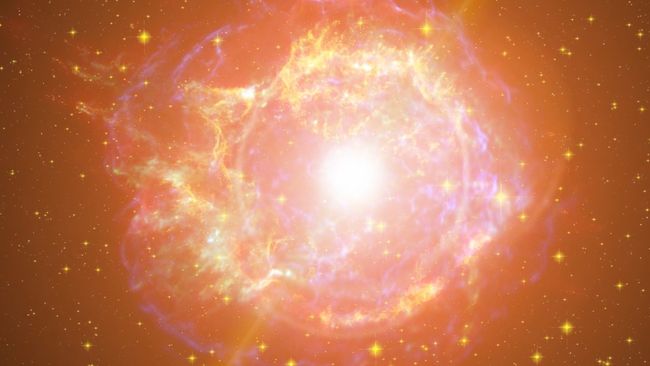The James Webb telescope has detected the farthest supernova ever observed.
The James Webb Space Telescope has detected a supernova that occurred only 1.8 billion years after the Big Bang, along with 80 other supernovae in the early universe. These ancient cosmic explosions may provide valuable insights for scientists seeking to unravel the mysteries of cosmic evolution.

The James Webb Space Telescope has identified the oldest and farther away supernova ever — a star that exploded when the universe was about 1. 8 billion years old.
This particular ancient starburst was found among other 80 in the region that, as it seen from Earth, would be the same size as an invisible line just slightly wider than a grain of rice when treated with just an arm length distance.
This is because supernovae are studied in terms of light, and hence the object’s luminosity is not constant. This is why the new batch of distant star explosions is particularly intriguing as understanding them might help explain some of the questions that scientists encountered concerning the development of the early universe. The research was conducted and then shared in the 244th meeting of the American Astronomical Society June 10 in Madison Wisconsin .
“We’re effectively throwing the curtain open on the evanescent cosmos There will be supernovas that we will observe in unprecedented detail, which are being spotted by other teams,” explained Matthew Siebert, who is spearheading the spectroscopic study of the supernovas. “‘Whenever we’ve tried to be really clever and make these clever plans, that’s when we’ve ended up discovering amazingly exciting things – things that we weren’t even looking for. ”
There are two main categories of supernova: core-collapse supernovae and thermonuclear runaway supernovae.
In the first one, stars with mass at least 8 times greater than the sun exhaust their fuel and undergo core collapse, before exploding into a huge shell.
The second one is known as Type Ia supernovae, which happens when a star pulls into another star, one of them being a white dwarf or the remnant of the star. This makes the white dwarf suck hydrogen from the star it is orbiting in a manner that attracts a runaway that leads to a massive thermonuclear explosion.
Type Ia supernovae are of special interest to astrophysicists as, when they explode, their brightness does not vary and can be used like a light signal to measure great distances in space determining the constant in question, the Hubble constant.
But the attempts were made to measure the Hubble constant with these standard candles and other methods are resulted in an increasing problem: the universe is expanding at different rates depending on the direction we turn. This, called the Hubble tension, has thrown significant uncertainty over the mainstream model of the universe and has endeavored to seek standard candles throughout the existence of the universe.
The researchers identified the ancient supernovae with the help of information from JWST Advanced Deep Extragalactic Survey (JADES). It was done by imaging the same area of the sky at one-year intervals through different surveys. By studying how the new points of light emerged or disappeared between the successive images, the researchers were able to locate the supernovae and some of those were type Ia explosions.
Researchers identify new extremely distant star explosions, and now they will examine it further to know about the metal and its distance. They claim that doing so should allow the scientists to better understand the stars that the blasts emerged from, as well as the environment of the universe that existed before the teenage years of the cosmos.
“This is really our first glimpse of what the high redshift [distant] universe looks like for Transient Science,” wrote Justin Pierel, an astronomer with the JADES team in the statement. “We are doing our best to understand whether the observed remotely exploded stars are significantly dissimilar to the nearby universe. “
Do not forget to share your opinion with us to provide you with the best posts !



0 Comments